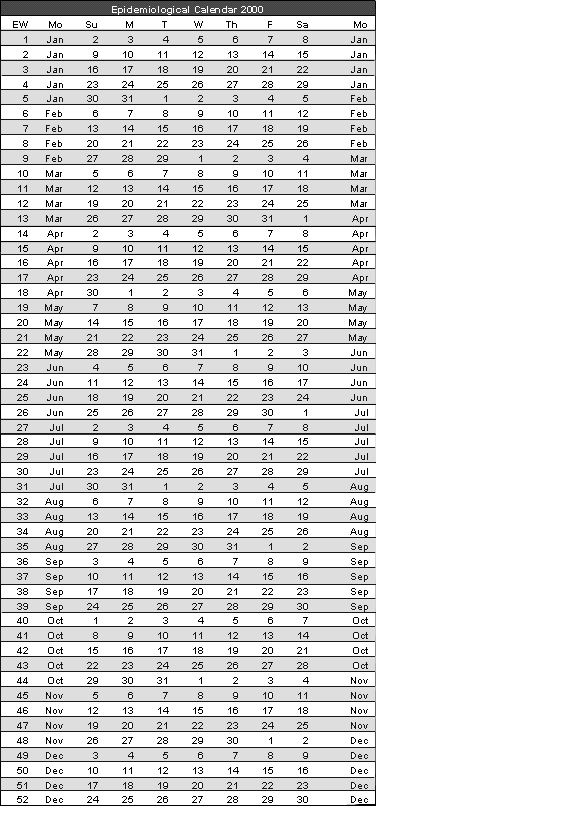
In order to carry out epidemiological surveillance activities, disease outbreaks or epidemiological events must be grouped around a given period of time. Ordinarily, this is a seven-day period known as the epidemiological week. Likewise, the 365 days of the calendar year are divided into epidemiological weeks, known as the epidemiological calendar, which is a standardization tool of the time variable for the purpose of epidemiological surveillance.
The importance of these divisions, especially the epidemiological week, is that they provide a means to compare the epidemiological events occurring in a given year, or period within a year, with those of previous years. Moreover, because the international community has officially adopted this methodology, epidemiological data can be compared between countries.
The epidemiological week begins on Sunday and ends on Saturday. The first epidemiological week of the year ends on the first Saturday of January, provided that it falls at least four or more days into the month. Therefore, the first epidemiological week may actually begin in December of the previous year. To illustrate this point, the following correspond to the first epidemiological weeks of recent and future years:
1998 January 4 -10
1999 January 3 -9
2000 January 2 -8
2001 December 31 -January 6
2002 December 30 -January 5
For the reference and practical use of the reader, an upcoming issue of the PAHO Epidemiological Bulletin will include the epidemiological calendar for the year 2001 in its norms and standards section

Return to Index
Epidemiological Bulletin, Vol. 20 No. 3, September
1999